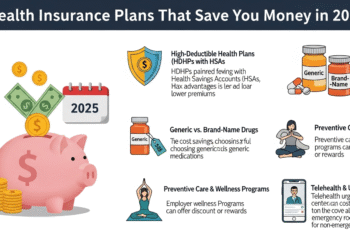How to Dramatically Improve Your Credit Score for Swift Loan Approval: In today’s financial landscape, a strong credit score isn’t just a number; it’s a powerful key that unlocks opportunities, from favorable loan terms to lower interest rates on mortgages, auto loans, and even credit cards. For many, the need to secure a loan – perhaps for a dream home, a new car, or to consolidate existing debt – becomes urgent, making the journey to a higher credit score a top priority. But what if you need to improve your credit score quickly for an impending loan approval?
This extensive guide will delve into actionable strategies and expert insights designed to help you rapidly boost your credit score. We’ll move beyond generic advice to provide a roadmap for maximizing your financial health, setting you on the path toward swift loan approval and a more secure financial future.
Understanding the Cornerstone: What is a Credit Score and Why Does it Matter So Much?
Before we dive into improvement tactics, it’s crucial to grasp the fundamentals. Your credit score is a three-digit number, most commonly FICO or VantageScore, that lenders use to assess your creditworthiness. It’s a snapshot of your financial reliability, predicting the likelihood that you’ll repay borrowed money.

The Major Players: FICO vs. VantageScore
- FICO Score: The most widely used credit scoring model, FICO scores range from 300 to 850. There are various versions of FICO, with FICO 8 being the most common, but lenders may use industry-specific scores (e.g., FICO Auto Score, FICO Bankcard Score).
- VantageScore: A newer model developed by the three major credit bureaus (Equifax, Experian, TransUnion), VantageScore also ranges from 300 to 850. While gaining traction, it’s still less prevalent than FICO.
Why Your Credit Score is Your Financial ID:
- Loan Approval & Interest Rates: This is the most direct impact. A higher score means you’re seen as less risky, leading to easier approvals and significantly lower interest rates. This can save you tens of thousands of dollars over the life of a mortgage or car loan.
- Credit Card Offers: Top-tier credit cards with excellent rewards programs and low APRs are reserved for those with strong credit.
- Rental Applications: Landlords frequently check credit scores as part of their screening process.
- Insurance Premiums: In many states, insurance companies use credit-based insurance scores to determine your premiums.
- Utility & Cell Phone Accounts: A good score can help you avoid security deposits.
- Employment: Some employers review credit reports (not scores) for positions of financial responsibility.
Understanding these foundational elements underscores the importance of actively managing and improving your credit profile, especially when you have a specific loan in mind.
Deconstructing Your Credit Score: The Five Pillars of Creditworthiness
To improve your score quickly, you first need to understand what factors influence it. Both FICO and VantageScore models weigh different aspects of your credit history. Here’s a breakdown of the generally accepted FICO factors, which account for the vast majority of your score:
- Payment History (35%): This is the most critical factor. Making payments on time, every time, is paramount. Late payments, collections, bankruptcies, and foreclosures severely damage your score.
- Amounts Owed / Credit Utilization (30%): This refers to how much credit you’re using compared to your total available credit. Keeping your credit utilization ratio (CUR) low is vital. We’ll explore this in detail.
- Length of Credit History (15%): The longer your accounts have been open and in good standing, the better. This demonstrates a consistent history of responsible borrowing.
- Credit Mix (10%): Having a healthy mix of different types of credit (e.g., revolving credit like credit cards and installment loans like mortgages or car loans) can be beneficial.
- New Credit (10%): Applying for too much credit in a short period can be seen as risky. Each “hard inquiry” can temporarily ding your score.
Understanding these percentages helps you prioritize your efforts for maximum impact.
Phase 1: Immediate Impact Strategies – Quick Wins for Your Credit Score
When time is of the essence, these strategies can provide the most rapid boost to your credit score.
1. Tackle Credit Utilization Aggressively (30% Impact)
This is arguably the most powerful lever you can pull for a swift score increase. Your credit utilization ratio (CUR) is calculated by dividing your total credit card balances by your total credit card limits. Lenders prefer to see this ratio below 30%, with the ideal being under 10% for excellent scores.
- Pay Down Balances Strategically: Focus on credit cards with high balances. Even paying down a significant portion of one card can make a difference.
- Aim for Below 10%: If possible, try to get all your credit card balances below 10% of their respective limits. This sends a strong signal of low risk.
- Understanding Reporting Cycles: Credit card companies report your balances to credit bureaus usually once a month, often on your statement closing date. If you pay off your card mid-cycle, the lower balance won’t be reflected until the next reporting period.
- Pro-Tip: Pay Before the Statement Date: Make a payment before your statement closing date to ensure the lowest possible balance is reported to the credit bureaus. You can even make multiple small payments throughout the month.
- Request a Credit Limit Increase (with caution): If you have a solid payment history with a card issuer, requesting a credit limit increase can lower your utilization without adding new debt. However, this often triggers a hard inquiry, which can slightly and temporarily lower your score. Only pursue this if you are confident you won’t be tempted to use the additional credit and if the potential score boost from lower utilization outweighs the temporary dip from the inquiry.
- Become an Authorized User (Carefully): If a trusted family member (e.g., a parent) has a long-standing credit card with a high limit and low utilization, asking them to add you as an authorized user can add their positive history to your report. This can provide an immediate boost, but choose wisely – their irresponsible use could also negatively impact you.
2. Obliterate All Past-Due Accounts (35% Impact)
Even a single late payment can severely damage your credit score. If you have any accounts that are currently past due, address them immediately.
- Pay Outstanding Balances: Contact the creditor and pay the overdue amount as soon as possible. While the late payment will remain on your report for up to seven years, bringing the account current will stop further negative reporting and show creditors you’re taking responsibility.
- Negotiate “Pay-for-Delete” (for collections accounts): If you have accounts in collections, you might be able to negotiate with the collection agency to remove the negative entry from your credit report in exchange for payment in full or a negotiated settlement. Get everything in writing before making any payments. Be aware that not all collection agencies will agree to this.
- Consider a “Goodwill Letter”: If you have a single late payment on an otherwise perfect account, you can write a goodwill letter to the creditor explaining the circumstances (e.g., a forgotten bill, a medical emergency) and politely requesting they remove the late payment mark. This is most effective for isolated incidents and with creditors with whom you have a good relationship.
3. Review Your Credit Report for Errors (Potentially Significant Impact)
Mistakes on your credit report are surprisingly common, and they can drag your score down unnecessarily.
- Obtain Your Free Reports: You are entitled to one free credit report from each of the three major bureaus (Equifax, Experian, TransUnion) annually via AnnualCreditReport.com. Pull all three, as they may contain different information.
- Scrutinize Every Detail: Look for:
- Accounts you don’t recognize.
- Incorrect payment statuses (e.g., an account marked late when it was on time).
- Incorrect balances or credit limits.
- Duplicate accounts.
- Incorrect personal information (address, name).
- Dispute Errors Promptly: If you find an error, dispute it directly with the credit bureau (and often the creditor as well). Provide documentation to support your claim. By law, they must investigate and respond within 30-45 days. Removing negative errors can lead to a quick score increase.
Phase 2: Sustained Growth Strategies – Building a Stronger Foundation
While the immediate impact strategies target quick boosts, these practices are essential for long-term credit health and ensuring your score remains high for future financial needs.
4. Prioritize On-Time Payments (35% Impact – Ongoing)
This cannot be overstated. Consistent, on-time payments are the bedrock of a good credit score.
- Set Up Payment Reminders: Use calendar alerts, banking app notifications, or third-party budgeting apps to ensure you never miss a due date.
- Automate Payments: Set up automatic minimum payments for all your accounts. This ensures you’ll never be late, and you can always make additional manual payments if you want to pay more.
- Payment History is Everything: Every on-time payment reinforces positive behavior and builds your score over time.
5. Maintain Low Credit Utilization (30% Impact – Ongoing)
This isn’t a one-time fix; it’s a continuous practice.
- Regularly Monitor Your Spending: Keep an eye on your credit card balances throughout the month, not just when the bill arrives.
- Consider a Second Payment: If you use your credit cards frequently, consider making two payments a month – one mid-cycle and one at the end – to keep your reported utilization low.
- Avoid Maxing Out Cards: Even if you pay off the full balance each month, if your card reports a high balance before payment, it can temporarily hurt your score.
6. Avoid Opening Too Many New Credit Accounts (10% Impact)
While a diverse credit mix can be beneficial over time, aggressively applying for new credit when you’re trying to get a loan can backfire.
- Hard Inquiries: Each time you apply for new credit (a credit card, a loan), a “hard inquiry” is placed on your credit report. These can temporarily lower your score by a few points and remain on your report for two years (though their impact fades after a few months).
- “Rate Shopping” Grace Period: For mortgage, auto, or student loans, credit scoring models often treat multiple inquiries within a specific window (typically 14-45 days, depending on the scoring model) as a single inquiry, recognizing you’re shopping for the best rate. This is called “rate shopping.” Still, it’s best to consolidate your applications within this window.
- Strategic New Credit: If your credit file is very thin (you have few accounts), responsibly opening a secured credit card or a small credit-builder loan might be an option if you have several months before your loan application. However, this is not a quick fix for someone needing a loan in weeks.
7. Don’t Close Old Accounts (15% Impact – Length of Credit History)
It might seem counterintuitive, but closing old credit card accounts can actually hurt your score.
- Reduces Available Credit: Closing an account reduces your total available credit, which can increase your credit utilization ratio on your remaining cards, even if your balances haven’t changed.
- Shortens Credit History: It also removes the positive payment history and length of that account from your average age of accounts, shortening your overall credit history.
- Exception: High-Fee or Tempting Accounts: The only time closing an account might be advisable is if it has a high annual fee you no longer want to pay and isn’t one of your oldest accounts, or if you find yourself constantly overspending on it.
8. Consider a Credit-Builder Loan or Secured Credit Card (If You Have Time)
These options are for those with a limited credit history or those looking to rebuild severely damaged credit, but they take time to show results.
- Secured Credit Card: You provide a cash deposit that becomes your credit limit. This deposit secures the card, making it less risky for the issuer. Use it responsibly and pay on time, and it will build positive credit history.
- Credit-Builder Loan: You borrow a small amount of money (e.g., $500-$1,000), but the funds are held in a savings account. You make monthly payments, and once the loan is paid off, you receive the money. This demonstrates consistent on-time payments.
Phase 3: Loan Application Preparation – Optimizing for Approval
Once you’ve implemented the credit-building strategies, it’s time to prepare for the actual loan application.
9. Get Pre-Approved or Pre-Qualified (Soft Inquiry)
Before making a formal application, seek pre-approval or pre-qualification.
- Pre-Qualification: This is a preliminary assessment based on information you provide. It usually involves a “soft inquiry” on your credit, which doesn’t affect your score. It gives you an estimate of how much you might be able to borrow.
- Pre-Approval: This is a more thorough process, where the lender verifies your income and assets. It typically involves a “hard inquiry,” but it provides a more concrete offer and shows sellers you’re a serious buyer (especially for mortgages).
10. Gather All Necessary Documentation
Be prepared with all the paperwork a lender will request. This speeds up the process and demonstrates your readiness.
- Proof of Income: Pay stubs, W-2s, tax returns.
- Bank Statements: Recent statements for checking and savings accounts.
- Identification: Driver’s license, social security card.
- Employment Verification: Contact information for your employer.
- Existing Debt Information: Statements for current loans, credit cards.
11. Communicate with Your Lender
Be transparent about your financial situation and your goals. A good loan officer can guide you through the process and explain options.
- Explain Past Issues: If you have legitimate reasons for past credit issues (e.g., medical emergency, job loss), be prepared to explain them concisely.
- Show Improvement: Highlight the steps you’ve taken to improve your credit and financial health.
Understanding the Timeline: How Fast Can You Improve Your Credit Score?
The speed of credit score improvement depends heavily on your starting point and the actions you take.
- Within 30-60 Days:
- Paying down credit card balances: This is the fastest way to see a significant jump, as new balances are reported monthly.
- Disputing and removing errors: If errors are swiftly resolved, you could see a boost.
- Paying off past-due accounts: While the late mark remains, bringing an account current stops further damage and improves your overall profile.
- Within 3-6 Months:
- Consistent on-time payments: The positive history begins to accumulate.
- Lowering utilization steadily.
- Authorized user status: If you’re added to a well-managed account, the impact can be seen quickly.
- 6-12+ Months:
- Building a thin file: Secured cards and credit-builder loans start to show significant positive history.
- Recovery from major negative events: Bankruptcies, foreclosures, and charge-offs remain for seven years, but their impact lessens over time, and consistent good behavior helps you rebuild.
For swift loan approval, focusing on credit utilization, eliminating past-due amounts, and clearing errors are your most potent short-term strategies.
Beyond the Score: Other Factors Lenders Consider
While your credit score is paramount, lenders also look at the bigger picture.
- Debt-to-Income Ratio (DTI): This compares your total monthly debt payments to your gross monthly income. Lenders typically prefer a DTI below 36% to 43%, though this varies by loan type and lender. A high DTI can hinder approval even with a good score.
- Improve your DTI: Pay down existing debt, increase your income, or look for a less expensive loan amount.
- Employment Stability: Lenders prefer to see a consistent employment history, ideally two years or more in the same field.
- Income Level: Do you earn enough to comfortably afford the loan payments?
- Down Payment/Equity: For secured loans like mortgages and auto loans, a larger down payment demonstrates commitment and reduces the lender’s risk.
- Savings/Assets: Having a healthy savings cushion can also reassure lenders of your financial stability.
The Final Word: Diligence and Patience Are Your Allies
Improving your credit score quickly for loan approval is an achievable goal, but it requires diligent effort and a strategic approach. Start by understanding your current credit situation, addressing the most impactful factors first, and then commit to consistent, responsible financial habits.
Remember, a higher credit score isn’t just about getting a loan; it’s about building a foundation for lifelong financial health, opening doors to better opportunities and saving you significant money in the long run. By following the steps outlined in this comprehensive guide, you’ll be well on your way to securing that loan and achieving your financial aspirations.
Next Steps:
- Would you like me to elaborate on any of these sections? For example, we could dedicate more space to the nuances of disputing errors or provide more specific examples of credit utilization strategies.
- Do you want to add a section on common credit score myths?
- I can also start generating images to break up the text and make it more engaging for a blog post. Just tell me what kind of image you’d like at any point! For example, we could start with an image illustrating the concept of a credit score.

